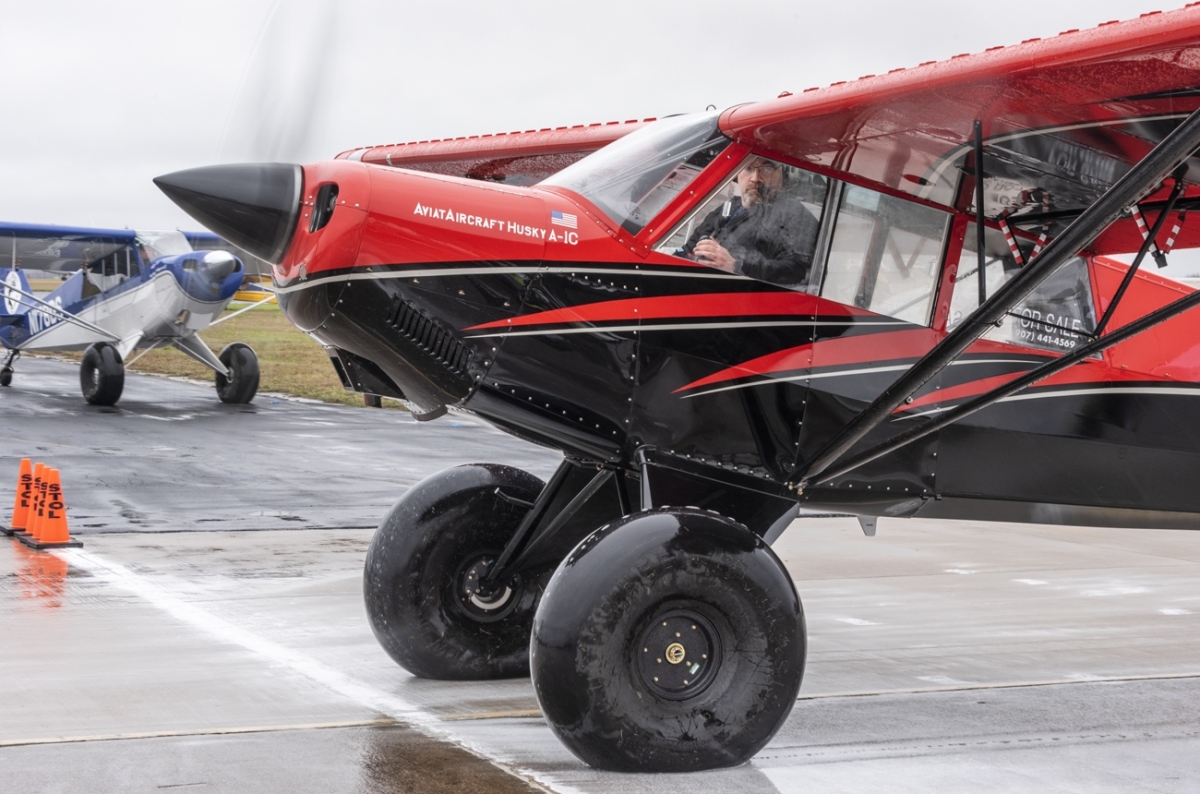On March 14th, the inaugural Aviat Lonestar STOL Competition & Fly-in took place at Gainesville Municipal Airport (GLE) on a chilly, blustery, and rainy day. For the pilots, the weather was not a problem. But, for the organizers, volunteers, and viewing audience it was a wet and uncomfortable day as they were in the wind and rain for hours.

And, as it turns out, this aviation event just missed the major disruption COVID-19 has since caused around the world. The airshow season was just getting started when one-by-one airshows and aviation events started to cancel across the land. To date, no airshows have taken place and most have been cancelled or postponed into June or later.We are in a unique time and so many are suffering. We’ll get through this. We have to work together. Be safe. Stay apart. Be united.

Short Takeoff and Landing (STOL) aircraft are built to get in and out of an area in the shortest distance possible.
Some aircraft are designed from the ground up to be a STOL airplane while others have been modified to make them more capable as STOL aircraft. They can operate on a prepared grass or paved runway. Depending on the aircraft, they can also takeoff and land on unprepared surfaces like dirt, grass, ice, and snow.There is no set size requirement for a STOL aircraft. They can be two seat like a Aviat Husky to a heavy lift military C-130 Hercules transport. The term STOL covers a wide range of aircraft types. STOL competitions are becoming popular around the US and Doug Jackson had the idea to bring the Lonestar STOL event to north Texas. It was months in the planning and despite the weather, it was a fun success. Congratulations to Doug, his team, sponsors, and the many volunteers that helped to make the event a reality. A STOL competition is one of the few sports in which the smallest score wins. Here’s how the competition works. The runway is marked in feet and inches and ‘judges’ line the runway to verify where the aircraft main gear leave the ground on takeoff, and spot the location of the main gear when the aircraft comes to a complete stop on landing. The pilot has two opportunities, in two cycles, to take off and to land…a total of four chances. The goal is to take off in the least amount of space and to land in the least amount of space. The best takeoff and landing scores are added to come up with the combined score. The smaller the number, the better. And, there are different classes for the heavier to lighter aircraft to account for the larger scores of the heavier aircraft. The overall winner of the 2020 Lonestar event was Steve Henry flying his awesome Highlander. Steve’s combined score was 52, that’s a 25-foot landing, and a 27-foot takeoff! Steve beat the next competitor by 8.5 feet.
NO KIDDING!
You can find out more about this event by visiting the menu above, or the website: lonestarstol.com – Enjoy the photos!



